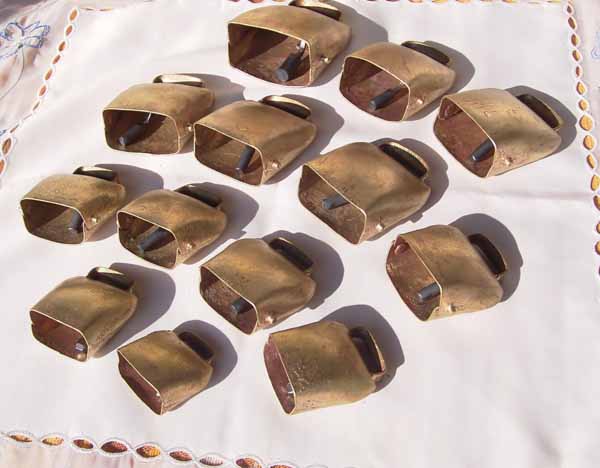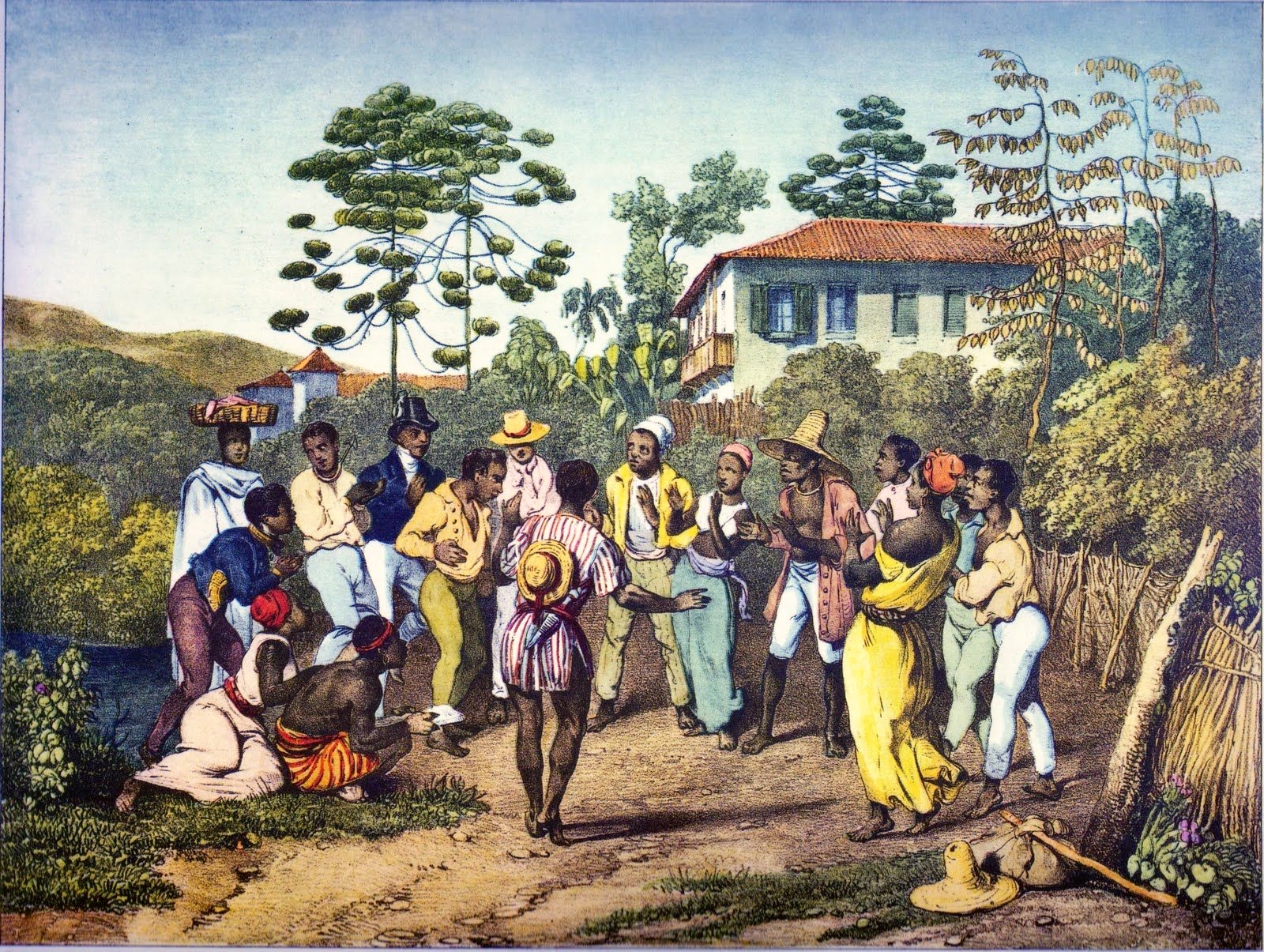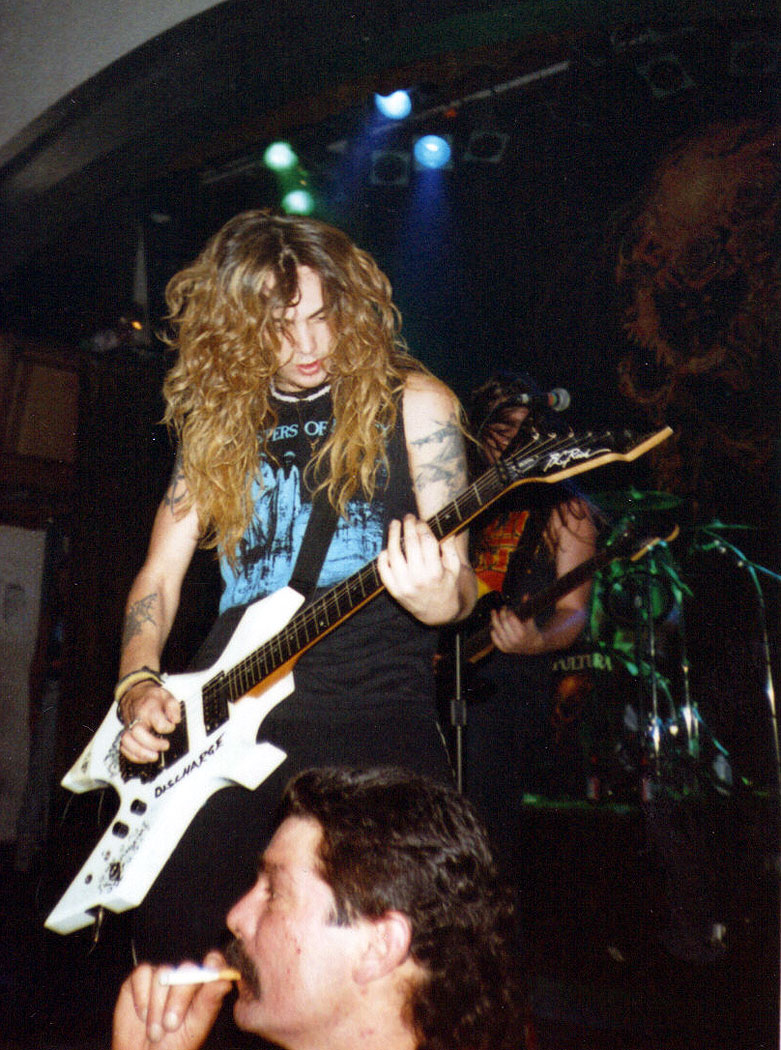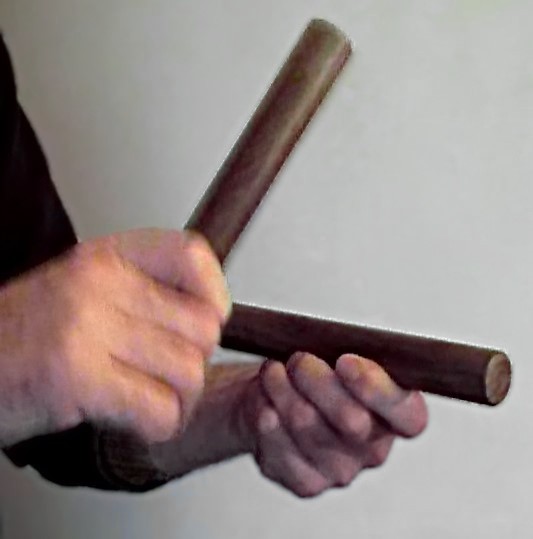|
Agogô
An agogô (Yoruba: ''agogo'', meaning bell) is a single or a multiple bell now used throughout the world but with origins in traditional Yoruba and Edo music and also in the samba '' baterias'' (percussion ensembles). The agogô may be the oldest samba instrument and was based on West African Yoruba single or double bells. The agogô has the highest pitch of any of the bateria instruments. Construction Each bell is a different size. This allows a differently pitched note to be produced depending on which bell has been hit. Originally wrought iron, they are now manufactured in a variety of metals and sizes for different sound qualities. The most common arrangement is two bells attached by a U shaped piece of metal. The smaller bell is held uppermost. Either bell may be hit with a wooden stick to make a cowbell like sound or less commonly a clicking sound is produced by squeezing the two bells together. Origins/History/Evolution The Yoruba, Igala, and Edo peoples of Nigeria use t ... [...More Info...] [...Related Items...] OR: [Wikipedia] [Google] [Baidu] |
Cowbell (instrument)
The cowbell is an idiophone hand percussion instrument used in various styles of music, such as Latin and rock. It is named after the similar bell used by herdsmen to keep track of the whereabouts of cows. The instrument initially and traditionally has been metallic; however, contemporarily, some variants are made of synthetic materials. Origins While the cowbell is commonly found in musical contexts, its origin can be traced to freely roaming animals. In order to help identify the herd to which these animals belonged, herdsmen placed these bells around the animal's neck. As the animals moved about the bell would ring, thus making it easier to know of the animal's whereabouts. Though the bells were used on various types of animals, they are typically referred to as "cowbells" due to their extensive use with cattle. Tuned cowbells Tuned cowbells or ''Almglocken'' (their German name, ‘Alm’ meaning a mountain meadow, and ‘Glocken’ bells), sometimes known by the En ... [...More Info...] [...Related Items...] OR: [Wikipedia] [Google] [Baidu] |
Afoxê
The term afoxé refers to a Carnival group originating from Salvador da Bahia, Brazil in the 1920s, and the music it plays deriving from the Afro-Brazilian Candomblé religion. It came to indicate a musical rhythm, named ijexá derived from the ijexá nation within Candomblé. Cultural performances of the afoxés, typically at Brazilian Carnival, incorporate choreography, song, ritual language and ceremonies deriving from the Candomblé religion. In Brazil, afoxé is generally performed by ''blocos'', afros-groups of mostly black or ''mulatto'' musicians who are familiar with African Brazilian music. Afoxés are a cultural and religious entity that preserves a tradition of Afro-Brazilian culture. Afoxé in Afro-Brazilian Carnival The annual Carnival that takes place in several cities of Brazil is considered the country's largest public festival. Specifically, Carnival in Bahia Salvador is the birthplace of several groups from the Afro-Brazilian tradition, afoxé, which relate ... [...More Info...] [...Related Items...] OR: [Wikipedia] [Google] [Baidu] |
Samba
Samba (), also known as samba urbano carioca (''urban Carioca samba'') or simply samba carioca (''Carioca samba''), is a Brazilian music genre that originated in the Afro-Brazilian communities of Rio de Janeiro in the early 20th century. Having its roots in Brazilian folk traditions, especially those linked to the primitive rural samba of the colonial and imperial periods, it is considered one of the most important cultural phenomena in Brazil and one of the country's symbols. Present in the Portuguese language at least since the 19th century, the word "samba" was originally used to designate a "popular dance". Over time, its meaning has been extended to a "batuque-like circle dance", a dance style, and also to a "music genre". This process of establishing itself as a musical genre began in the 1910s and it had its inaugural landmark in the song "Pelo Telefone", launched in 1917. Despite being identified by its creators, the public, and the Brazilian music industry as "samba" ... [...More Info...] [...Related Items...] OR: [Wikipedia] [Google] [Baidu] |
Bateria
The term ''bateria'' means “drum kit A drum kit (also called a drum set, trap set, or simply drums) is a collection of drums, cymbals, and other auxiliary percussion instruments set up to be played by one person. The player (drummer) typically holds a pair of matching drumsticks ...” in Portuguese language, Portuguese and Spanish language, Spanish. In Brazil, the word is also used for a form of Brazilian samba band, the Percussion instrument, percussion Band (music), band or rhythm section of a Samba School. It might also mean ''Battery (electricity), battery''. ''Baterias'' are also used to accompany the Brazilian martial art, ''capoeira''. Instruments *''Surdo'' (a large, low-tuned drum, the heartbeat of the samba) *''Snare drum, Caixa de guerra'' (a snare drum) *' (a smaller snare drum) *''Repinique'' (a small drum, twelve by fourteen inches) *''Chocalho'' (a rattle, made up of rows of jingles) *''Tamborim'' (a frame drum played with a flexible beater) *''Agogô'' ... [...More Info...] [...Related Items...] OR: [Wikipedia] [Google] [Baidu] |
Yoruba Language
Yoruba (, ; Yor. '; Ajami: ) is a language spoken in West Africa, primarily in Southwestern and Central Nigeria. It is spoken by the ethnic Yoruba people. The number of Yoruba speakers is roughly 50 million, plus about 2 million second-language speakers. As a pluricentric language, it is primarily spoken in a dialectal area spanning Nigeria and Benin with smaller migrated communities in Côte d'Ivoire, Sierra Leone and The Gambia. Yoruba vocabulary is also used in the Afro-Brazilian religion known as Candomblé, in the Caribbean religion of Santería in the form of the liturgical Lucumí language and various Afro-American religions of North America. Practitioners of these religions in the Americas no longer speak or understand the Yorùbá language, rather they use remnants of Yorùbá language for singing songs that for them are shrouded in mystery. Usage of a lexicon of Yorùbá words and short phrases during ritual is also common, but they have gone through changes due to th ... [...More Info...] [...Related Items...] OR: [Wikipedia] [Google] [Baidu] |
Soulfly
Soulfly is an American heavy metal band formed in Los Angeles, California, in 1997, and later based out of Phoenix, Arizona. Soulfly is led by former Sepultura frontman Max Cavalera, who formed the band after he left the Brazilian group in 1996. To date the band has released twelve studio albums, one tour EP, twenty-three singles, one video album, and twelve music videos. Their debut album, '' Soulfly'', was released on April 21, 1998, while their most recent album, ''Totem'', was released on August 5, 2022 Soulfly incorporates many styles of metal with Brazilian tribal and world music, much like Cavalera's previous band Sepultura. The original lyrical content revolved around spirituality, political and religious themes, with later albums encompassing other themes including war, violence, aggression, slavery, hatred and anger. All of their first six studio albums debuted on the United States ''Billboard'' 200, with a peak position at number 32 for their second album, ' ... [...More Info...] [...Related Items...] OR: [Wikipedia] [Google] [Baidu] |
Love Rollercoaster
"Love Rollercoaster" is a song by American funk/ R&B band Ohio Players, originally featured on their 1975 album ''Honey''. It was composed by William Beck, Leroy Bonner, Marshall Jones, Ralph Middlebrooks, Marvin Pierce, Clarence Satchell, and James Williams. It was a number-one U.S. hit in January 1976, and was certified gold. In Canada, the song spent two weeks at number two. "Love Rollercoaster" was covered by American rock band Red Hot Chili Peppers for the soundtrack of the 1996 animated movie '' Beavis and Butt-Head Do America.'' Urban legend The song has been the subject of a persistent urban legend since its release. A primal scream is heard in the background fairly early in the song (between 1:24 and 1:28 on the single version, or between 2:32 and 2:36 on the album version). According to the most common legend, it was the voice of an individual being murdered live while the tape was rolling. Jimmy "Diamond" Williams described the innocent nature of the scream: There ... [...More Info...] [...Related Items...] OR: [Wikipedia] [Google] [Baidu] |
Funk
Funk is a music genre that originated in African Americans, African American communities in the mid-1960s when musicians created a rhythmic, danceable new form of music through a mixture of various music genres that were popular among African Americans in the mid-20th century. It de-emphasizes melody and chord progressions and focuses on a strong rhythmic groove (music), groove of a bassline played by an electric bassist and a drum part played by a drum kit, percussionist, often at slower tempos than other popular music. Funk typically consists of a complex percussive groove with Rhythm section, rhythm instruments playing interlocking grooves that create a "hypnotic" and "danceable" feel. Funk uses the same richly colored extended chords found in bebop jazz, such as minor chords with added sevenths and elevenths, or dominant seventh chords with altered ninths and thirteenths. Funk originated in the mid-1960s, with James Brown's development of a signature groove that emphasized t ... [...More Info...] [...Related Items...] OR: [Wikipedia] [Google] [Baidu] |
Ohio Players
Ohio Players is an American funk band, most popular in the 1970s. They are best known for their songs "Fire" and "Love Rollercoaster", and for their erotic album covers that featured nude or nearly nude women. Many of the women were models featured in ''Playboy''. The singles " Funky Worm", "Skin Tight", "Fire", and "Love Rollercoaster", and their albums '' Skin Tight'', ''Fire'', and ''Honey'', were awarded Gold certification. On August 17, 2013, Ohio Players were inducted into the inaugural class of the Rhythm and Blues Music Hall of Fame that took place at Cleveland State University in Cleveland, Ohio. History The band formed in Dayton, Ohio, United States, in 1959 as the Ohio Untouchables and initially included members Robert Ward (vocals/guitar), Marshall "Rock" Jones (bass), Clarence "Satch" Satchell (saxophone/guitar), Cornelius Johnson (drums), and Ralph "Pee Wee" Middlebrooks (trumpet/trombone). They were best known at the time as a backing group for The Falcons. W ... [...More Info...] [...Related Items...] OR: [Wikipedia] [Google] [Baidu] |
Bell Pattern
A bell is a directly struck idiophone percussion instrument. Most bells have the shape of a hollow cup that when struck vibrates in a single strong strike tone, with its sides forming an efficient resonator. The strike may be made by an internal "clapper" or "uvula", an external hammer, or—in small bells—by a small loose sphere enclosed within the body of the bell ( jingle bell). Bells are usually cast from bell metal (a type of bronze) for its resonant properties, but can also be made from other hard materials. This depends on the function. Some small bells such as ornamental bells or cowbells can be made from cast or pressed metal, glass or ceramic, but large bells such as a church, clock and tower bells are normally cast from bell metal. Bells intended to be heard over a wide area can range from a single bell hung in a turret or bell-gable, to a musical ensemble such as an English ring of bells, a carillon or a Russian zvon which are tuned to a common scale and insta ... [...More Info...] [...Related Items...] OR: [Wikipedia] [Google] [Baidu] |
Max Cavalera
Massimiliano Antonio "Max" Cavalera (; born August 4, 1969) is a Brazilian musician. He co-founded the heavy metal band Sepultura in 1984 with his brother Igor Cavalera, and was the band's lead singer and rhythm guitarist until his departure in 1996. He currently plays in the heavy metal bands Soulfly, Cavalera Conspiracy and Killer Be Killed. Cavalera was also involved in a short-lived side project called Nailbomb. Life and career Max Cavalera's father, Graziano Cavalera, was an employee of the Italian Consulate in Belo Horizonte. He died at 41 years of age, when Max was nine years old. Cavalera's family was in a state of financial crisis and family turbulence when he formed Sepultura with his younger brother Igor. In the early 1990s, he relocated to Phoenix, Arizona. He did not begin to make spiritual music until after he quit Sepultura. His earlier lyrics for Soulfly were influenced by religion and spirituality, though he is critical of religion. His later albums, star ... [...More Info...] [...Related Items...] OR: [Wikipedia] [Google] [Baidu] |
Claves
Claves (; ) are a percussion instrument consisting of a pair of short, wooden sticks about 20–25 centimeters (8–10 inches) long and about 2.5 centimeters (1 inch) in diameter. Although traditionally made of wood (typically rosewood, ebony or grenadilla) many modern manufacturers offer claves made of fiberglass or plastic. When struck, claves produce a bright, penetrating clicking noise. This makes them useful when playing in large dance bands. Claves are sometimes hollow and carved in the middle to amplify the sound. History Claves have been very important in the development Afro-Cuban music, such as the son and guaguancó. They are often used to play an ostinato, or repeating rhythmic figure, throughout a piece known as the clave. Many examples of clave-like instruments can be found around the world. Technique The basic principle when playing claves is to allow at least one of them to resonate. The usual technique is to hold one lightly with the thumb and ... [...More Info...] [...Related Items...] OR: [Wikipedia] [Google] [Baidu] |









